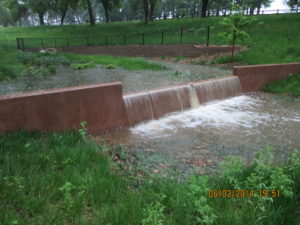
What is Green Infrastructure?
To counter the effects of excessive, polluted stormwater runoff, we can manage it with green infrastructure. Green infrastructure involves the use of soils, plants, and land features in an effort to preserve, interconnect, and mimic natural processes that slow, sink, and spread stormwater where it falls. Using green infrastructure to manage stormwater has numerous benefits besides just managing it, including providing habitat and corridors for wildlife, cleaner water, cleaner air, reducing the urban heat island effect, energy use reduction, and improved quality of life.
Green infrastructure is a broad concept that can be broken down on three scales:
- Watershed – includes the patchwork and connection of natural areas such as prairies, forests, rivers, streams, and lakes
- Neighborhood – this includes street trees, bioswales, prairie plantings, neighborhood pond
- Your home or business – this is what most people are familiar with and can include rain gardens, green roofs, and permeable pavements
The City of Omaha has been constructing demonstration projects throughout the watershed to show different types of Green Infrastructure and how they reduce runoff and pollution entering the local creeks, streams and ultimately, the Missouri River.
These projects also provide valuable experience in design, installation, and maintenance for everyone involved and the public. They are all located in public areas and most have information on-site describing it and how it works.
A number of fact sheets have been developed to help people become familiar with green infrastructure projects; they are listed on the left, enjoy!
